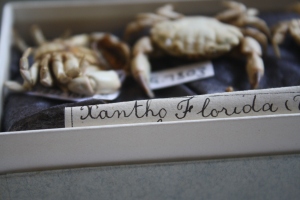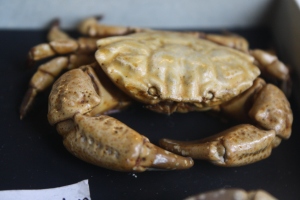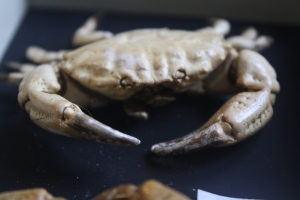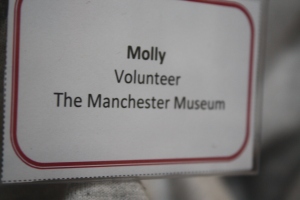Cancer incisus Leach, 1814
These specimens, with the name Xantho florida written on their boxes, were probably of biggest surprise to me, not due to their appearance or their beauty (although as with all of these specimens- they are beautiful!). It was the name that concerned me.
I had 4 records of this species so I assumed (or hoped) the name was nearly right, but when I searched articles and databases, and even did a Google search as last resort, I found nothing! I was suprised but things like this just make me determined to find the correct name.
Now, the information was out there and I knew it would be, and maybe I’m just complaining about how hard it was to find, but I was so relieved when I found a piece of literature which described Xantho florida, and outlined the whole story of its journey as a name.
Typically, I thought I’d share it with the big wide world, incase anyone else has this same problem and needs an explanation.
The article was The Raffles Bulletin of Zoology 1997 45(2):419-443. Title: Lophozozymus erinnyes, a new species of poisonous crab from Australia, with notes on L. pictor (Fabricus, 1798), L. incisus (H. Milne Edwards, 1834) and L. edwardsi (Odhner, 1925) (CRUSTACEA: DECAPODA: BRACHYURA: XANTHIDAE) by Peter K. L. Ng and Diana G. b. Chia
Leach himself (1815) synonymised Xantho incisa Leach, 1814, with Cancer floridus Montagu, 1808, and the name Xantho floridus (Montagu, 1808) was then used consistently used for the species until 1954. Holthuis (1954) was the first to point out that floridus Montagu is not an available specific name as Montagu (1808) had incorrectly identified the species with the tropical Indo- West Pacific Cancer floridus Linnaeus, 1758 (= Atergatis floridus (Linnaeus, 1758» (see Ng & Holthuis, 1993). The name Xantho incisus Leach, 1814, was thus, generally accepted only after Holthuis’s (1954) revelation. In his treatment of the species, Holthuis (1954) commented that “The first valid name given to MONTAGU’ S species is that of Cancer incisus Leach (1814), and therefore it should be known under the name Xantho incisus (Leach, 1814)” (Holthuis, 1954: 103). As such, Holthuis (1954) effectively acted as the first reviser in choosing between Cancer incisus Leach, 1814, and Xantho incisa Leach, 1814, as he mentioned both names (Cancer incisus and Xantho incisus) and chose Cancer incisus as the senior of the two, citing the author of Xantho incisa (Leach, 1814) in parenthesis. In addition, on the ICZN Official List of Specific Names in Zoology, the combination Cancer incises Leach, 1814, is used as the original combination.
So… with that in mind, Cancer incisus Leach, 1814 it is! I am going to be sending a finished checklist of all names I have decided on for the collection to a few experts, hoping some will have the time to look over and check if they look right. So for now, with this literature as my backup, I have used Cancer incisus, but if anybody knows of any changes to this nomenclature, please do let me know! 😀
And in other news, I got a badge today 😀 Very proud of it too…





thank you very much Molly. I have one Xanthi floridus in the Museum (MHN) in Nantes. You helped me.
LikeLike
Hi
I just want to point out that the genus name Xantho has to be considered female and thus all species epithets should be female. The use of both female and male endings after Xantho in the explanation above is erroneous. As Leach himself implied by stating the ending as Xantho florida in his original description, Xantho is a female name of a yellow-haired sea nymph.
Thus: Xantho incisa and Xantho florida!
Regards
Stephen Manktelow
Swedish Species Information Centre, Uppsala
LikeLike